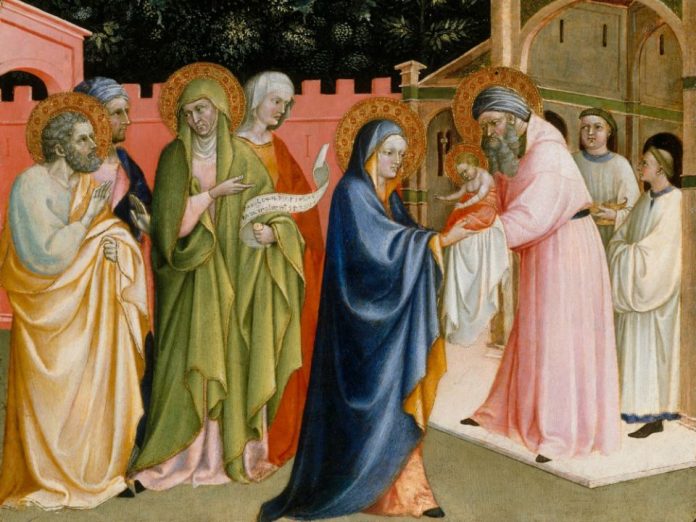Groundhog Day enthusiasts will tell you that for decades there has only been one groundhog named Punxsutawney Phil, even though groundhogs only live for six years or so. In a similar way, it can feel like there’s always a single distraction in American culture; we just keep switching out the bodies.
Our fresh amusements or outrages are periodically lifted up by the next man with a top hat, making it especially appropriate that the groundhog celebration coincides this year with the pageantry of Super Bowl Sunday. What makes February 2 a strikingly sad illustration of our national propensities is the splendor of what it conceals.
But don’t take my word for it; take Pope Pius IX’s. The definer of papal infallibility and author of the 1864 Syllabus of Errors claimed the Virgin Mary was called “Virgin Priest by the Fathers of the Church.”
The 20th-century priest René Laurentin decided to fact-check this pontifical declaration, just as puzzled readers might do today. Two dissertations later, Laurentin learned the Pope was right—the priesthood of Mary saturates the Christian tradition, and even has biblical basis. Mary is connected, through her kinswoman Elizabeth, to a priestly lineage even higher than Elizabeth’s husband, the priest Zechariah (Luke 1:5, 36). Hence church authorities like Theodore the Studite could say regarding Mary, “Hail daughter, young sacrificial priest,” and Tarasios the Patriarch of Constantinople could call her “the greatest among the high priests.”
Such associations are especially clear in art history, where Mary regularly sports vestments reserved for the clergy. This appears even in mainstream illustrations for the Feast of the Presentation of Jesus in the Temple, celebrated February 2, but which most people only know as “Groundhog Day.”
In classic Byzantine depictions of the event, Mary approaches the altar and offers Jesus over what look like the royal doors through which—in the Orthodox tradition—the sanctified elements emerge. In accordance with the law (Ex. 13:1–2; Luke 2:22–23), she offers back to God the son she was given as if she were a second Abraham. (In some churches in Cyprus, Mary’s sacrifice and Abraham’s are even depicted in tandem.)
The Feast of the Presentation was celebrated in the West as well, where some say it was used to counteract the annual pagan festival of Lupercalia. It was also known as Candlemas because it fell in dark winter when artificial light was especially required. Martin Luther, understanding the feast’s biblical basis, suggested Protestants retain it. To those wondering how much longer winter would last, one German folk tradition offered an answer: “If Candlemas is bright and clear, the crops will be damaged, and it will be a bad year.”
Such predictions were also linked to badgers, foxes, or bears in German-speaking Europe; when German settlers came to the United States, specifically to Pennsylvania, this tradition latched on to the groundhog, the sight of whose shadow testified to a “bright and clear” day, and hence a prolonged winter.
We can be sure that neither Mary nor any of the church fathers ever laid eyes on a groundhog, with or without his shadow. A more immediate animal to connect Candlemas to would be the turtledove, which the holy family presented at the temple in place of a lamb because they were poor (Lev. 12:8; Luke 2:24). The terrified doves are highlighted in the center of Lorenzetti’s colorful depiction of the scene. In one haunting Orthodox icon, the offering of Mary’s son and the birds overlap: Jesus’ head is twisted as if he were a sacrificial pigeon, neck snapped for the sin of the world.
Source: Christianity Today
All Content & Images are provided by the acknowledged source
